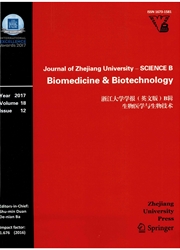

 中文摘要:
中文摘要:
霉浆菌,有 200 ~ 800 nm 的直径的最小的免费生活的、自我复制的细菌,被报导了与人的疾病被联系。霉浆菌脂蛋白 / 肽能调制主人免疫系统,是众所周知的,其 N 终端结构是在导致免疫并且区分像使用费的受体(TLR ) 的一个重要因素。然而,仍然关于霉浆菌脂蛋白 / 肽和发信号的小径的病原的机制没有清楚的说明。一些研究人员集中于理解在他们的结构和生物功能之间的这些蛋白质和关系的结构。这评论在这个领域里在研究上提供更改。
 英文摘要:
英文摘要:
Mycoplasmas, the smallest free-living, self-replicating bacteria with diameters of 200 to 800 nm, have been reported to be associated with human diseases. It is well known that the mycoplasma lipoprotein/peptide is able to modulate the host immune system, whose N-terminal structure is an important factor in inducing immunity and distinguishing Toll-like receptors (TLRs). However, there is still no clear elucidation about the pathogenic mechanism of mycoplasma lipoprotein/peptide and the signaling pathway. Some researchers have focused on understanding the structures of these proteins and the relationships between their structure and biological function. This review provides an update on the research in this field.
 同期刊论文项目
同期刊论文项目
 同项目期刊论文
同项目期刊论文
 期刊信息
期刊信息
